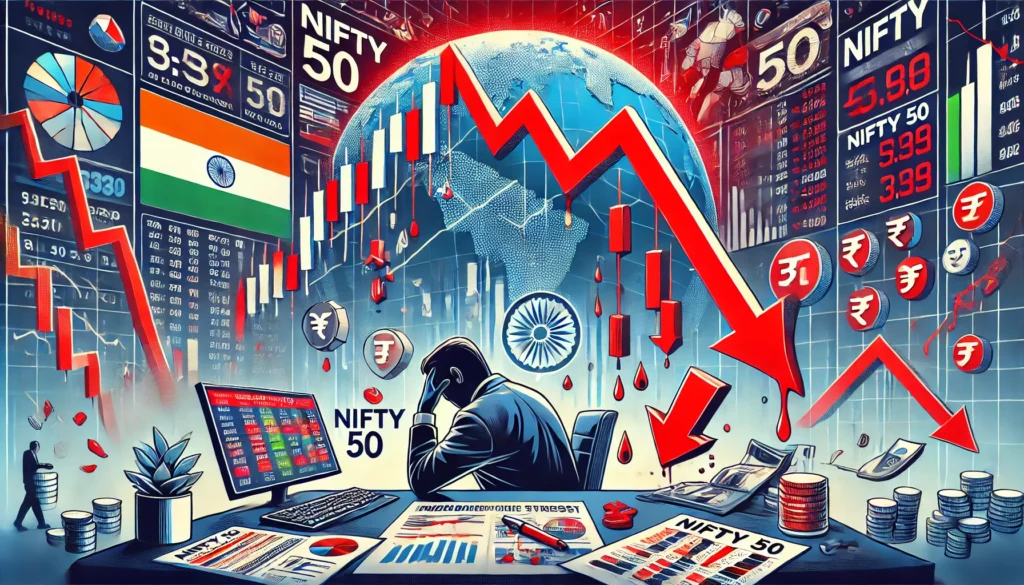Inflation and deflation are two important phenomena of economics which affect economies, businesses, as well as individual citizens greatly. The term inflation denotes an increase in prices of goods and services over time while a decrease in the average price level of goods and services is referred to as deflation. Understanding the effects of both inflation and deflation is essential for any investor, policy maker and general public. Both come with negative or positive consequences in areas such as purchasing power, economic growth, and financial stability.
What is Inflation?
Inflation is defined as the ratio at which a substantial portion of price levels rises on goods and services availed. Moderate or mild inflation generally accompanies growth in an economy. However, out of control inflation can be detrimental to wealth and economic stability.
Inflation’s Causes:
- Demand-Pull Inflation – “Demand-pull” refers to the situation where demand outweighs supply, and in turn, prices rises due to inflation.
- Cost-Push Inflation – Inflation of price level aggregated as a sum of factors that compel a firm to business, such as wages and raw materials, is referred to as cost-push inflation.
- Monetary Expansion – Inflation accompanied by excessive spending, investment, immoderate money supply owing to underestimating issued currency is called monetary expansion.
- Supply Chain Disruptions – Wars, natural calamities and pandemics form the broad context of supply chain disruptions and are one of the reasons why there is a push in pricing.
Consequences of Inflation:
- Reduced Buying Power – A rise in prices causes consumers to have a lower purchasing power.
- Increased Interest Rates – To control inflation, central banks may increase their interest rates which makes borrowing more costly.
- Business Planning Uncertainty – Inconsistent costs make it more challenging for companies to plan over extended periods of time.
- Positive Asset Price Inflation – In most cases, inflation increases the value of real estate, stocks, and other fundamental assets.
What is Deflation?
The opposite of inflation, deflation refers to the rate at which the general level of prices for goods and services falls under a period whereby leading to a rise in the value of money. While this may look favorable on the surface, continued deflation can suggest a deep economic problem whereby there’s a drop in spending and investment activity.
Reasons for Deflation:
- Lack of Consumption Demand – When there is an anticipation of a further drop in prices, deflation lead to a lower purchasing power and consequently demand.
- Restriction on Money Supply – When central banks cut the money supply, prices can drop when accompanied with low liquidity.
- Lowering Costs of Production by New Information Technology – Costs can lower when production become more efficient due to the increased use of automation.
- Paying Off Debts – When there is a focus on the repayment of core debts rather than onto paying demand is lowered.
- Shifting Burden of Real Debt – As debt ages, it’s more cumbersome to service due to the rising worth of money.
- Impact on Wages and Employment – Firms unable to control lowering pricing may implement wage reductions and staff cutbacks in order to survive.
- Reduced Business Spending – Firms are more cautious about spending because they want to expand during a drop in prices. Risk of Recession – If economic activity continues to decline for a sustained period, a recession will be on the horizon.
Strategies for Addressing Inflation & Deflation
- Monetary Policy – Increasing or decreasing the interest rates influences how the inflation or deflation rate changes.
- Fiscal Policy – Portrayed through taxation and state expenditure, it enables stimulating or decelerating the economy.
- Other policies – Investment in technology, administration, infrastructure, or human capital are alternative ways to combat inflation.
Illustrative Cases
- Zimbabwean Hyperinflation (2000s) – Due to high-volume printing of money, inflation grew to hundreds of millions of percent.
- 1930s The Great Depression – It caused deep deflation that increased unemployment while severely decreasing the economy’s overall growth rate.
- The U.S. Inflation in the 1970s- Due to an oil price shock along with increased monetary inflation, America underwent massive inflation and stagflation.
Conclusion
Inflation and deflation are crucial forces shaping economies worldwide. While moderate inflation is necessary for economic growth, excessive inflation or deflation can have severe consequences. Effective monetary and fiscal policies are essential to maintaining a balanced economic environment, ensuring financial stability, and fostering sustainable growth. Understanding these dynamics enables businesses, policymakers, and individuals to make informed financial decisions.



